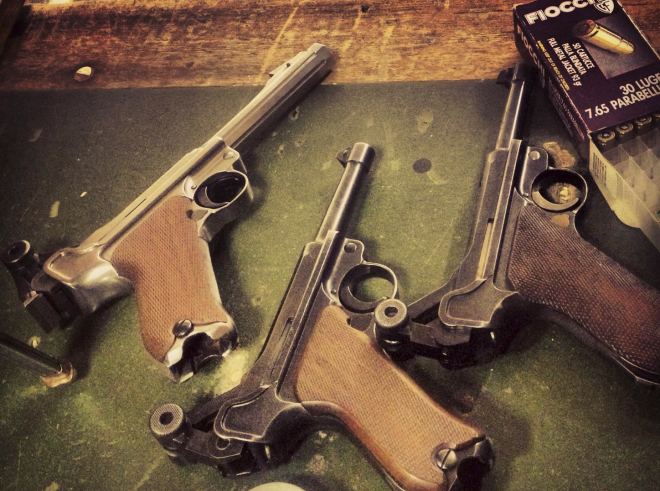Håkan Spuhr is the man and inventor behind the famous Spuhr scope mounts, the upgrade kits for various Heckler & Koch models, one of the world’s most advanced mounting system for Night Vision and a bunch of other modern military equipment.
What is perhaps not so well know, is Håkan’s strange fascination for Luger pistols, old binoculars, WWI machine guns and other “old stuff”.
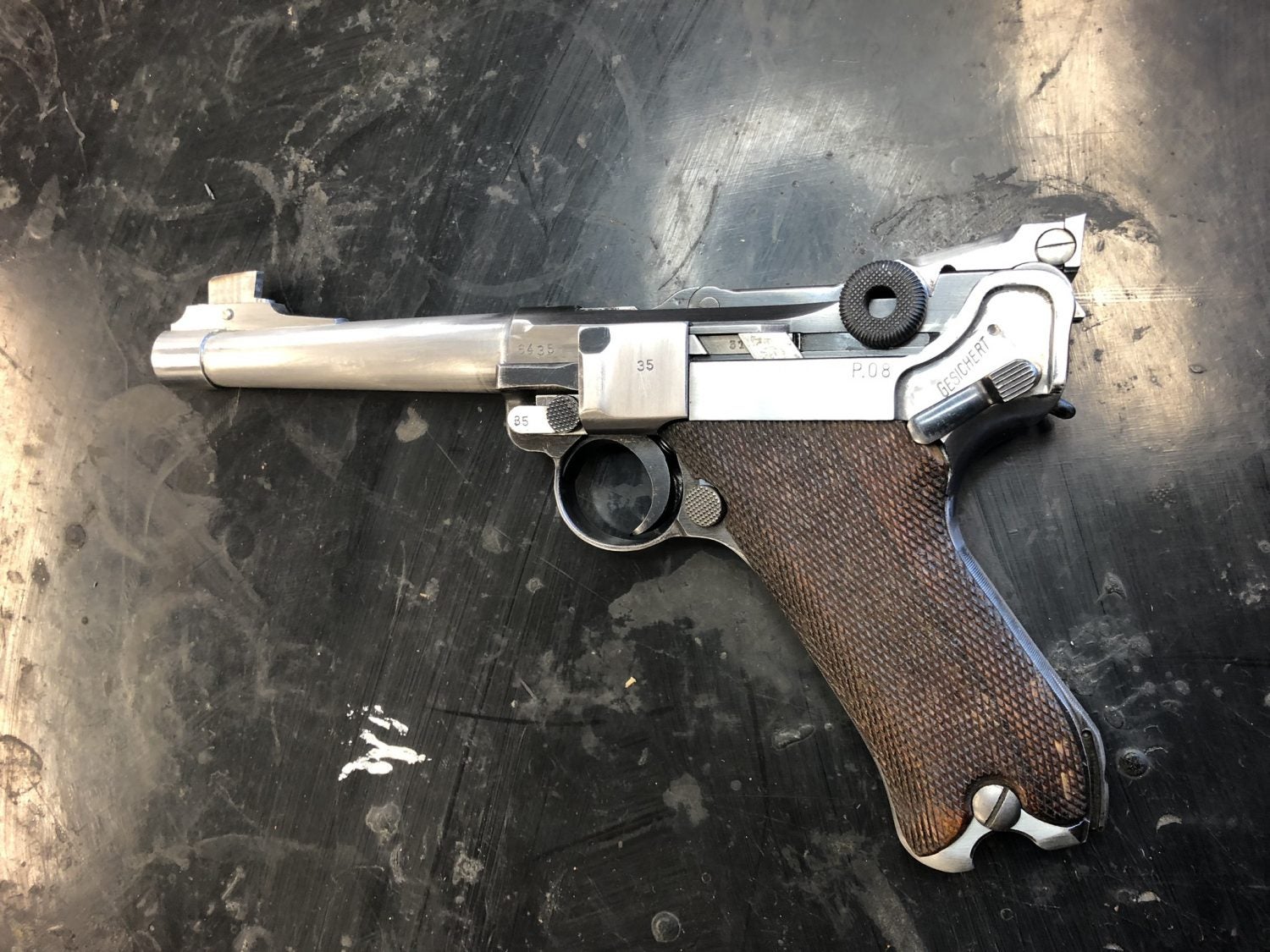
“Old stuff” that most of us don’t use, or maybe don’t care so much about any longer. Of course, in the case of machine guns – regardless of their age – they aren’t easily accessible for most people.

Background
Already at the age of 10, Håkan decided to become a gunsmith. A natural path to any gunsmith according to Håkan is to become a tool and die maker, so that’s what he started out as.
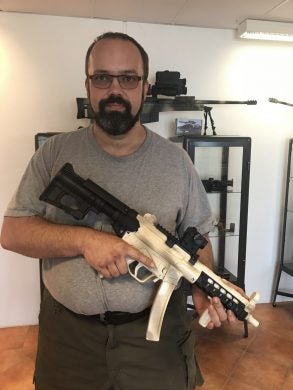
In a way the connection between his company’s modern production and his fascination with historic firearms and optics becomes clear when comparing the old style quality that he is interested in, to the quality his own company now has become known for.
In the Spring of 2019 TFB did a Factory visit. We found a factory with clean, shiny floors where production methods, quality assurance systems and machines are really state of the art.
Below: Part of the Spuhr factory with CNC milling machines and robots.
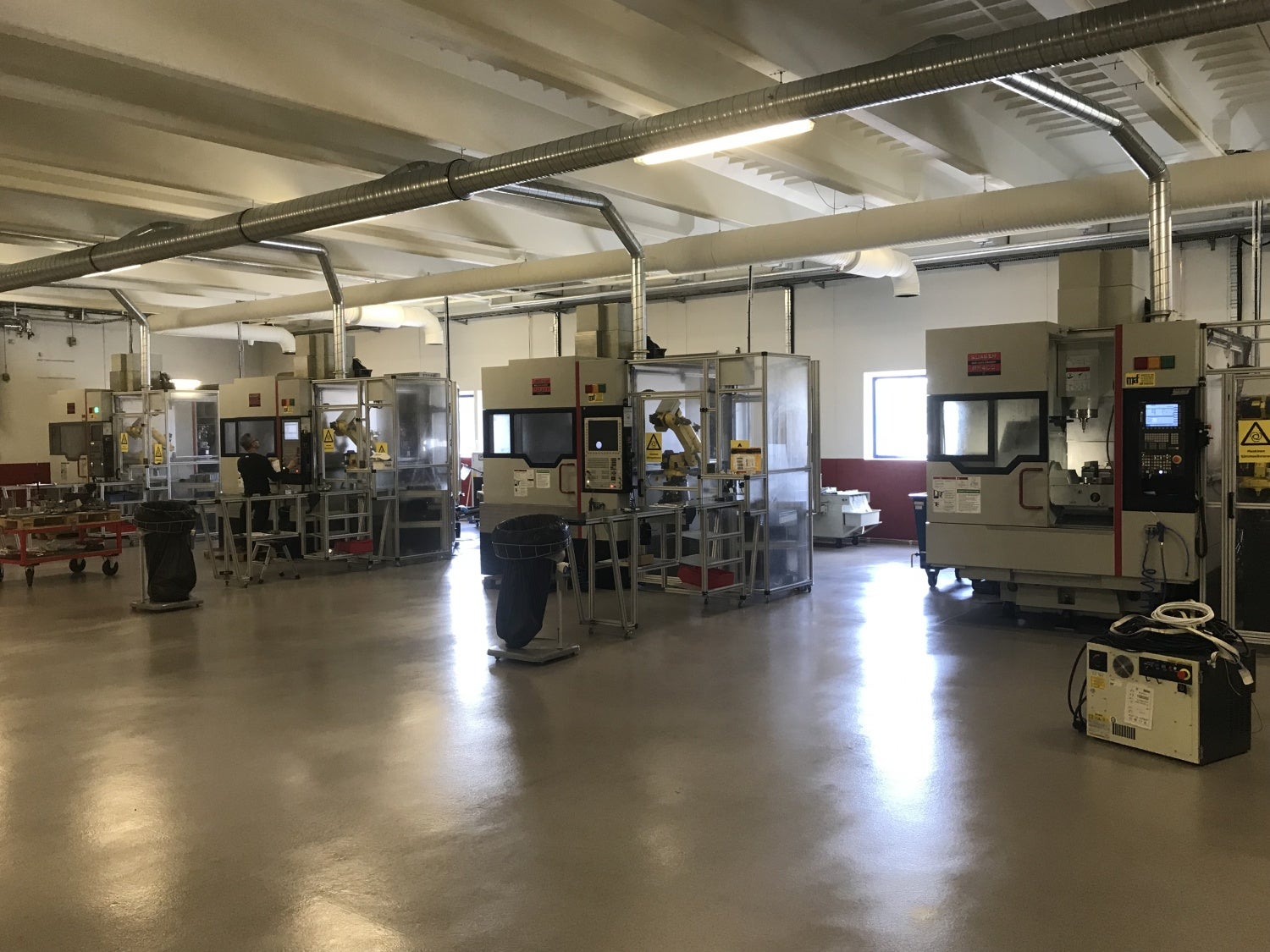
Luger – The World’s most accurate centerfire service pistol
Håkan states that the “Luger is the World’s most accurate centerfire service pistol” and that in some aspects it’s the most modern of all centerfire target pistols. With the important exceptions that “the balance and the sights sucks!”
The reasons behind Spuhr’s conclusions are that the Luger has an exceptionally low bore and the striker has a very short length of travel (about 7 mm) and therefore a low time until impact with the primer. The grip angle is very similar to that of the Glock pistol (but it doesn’t take Glock magazines).
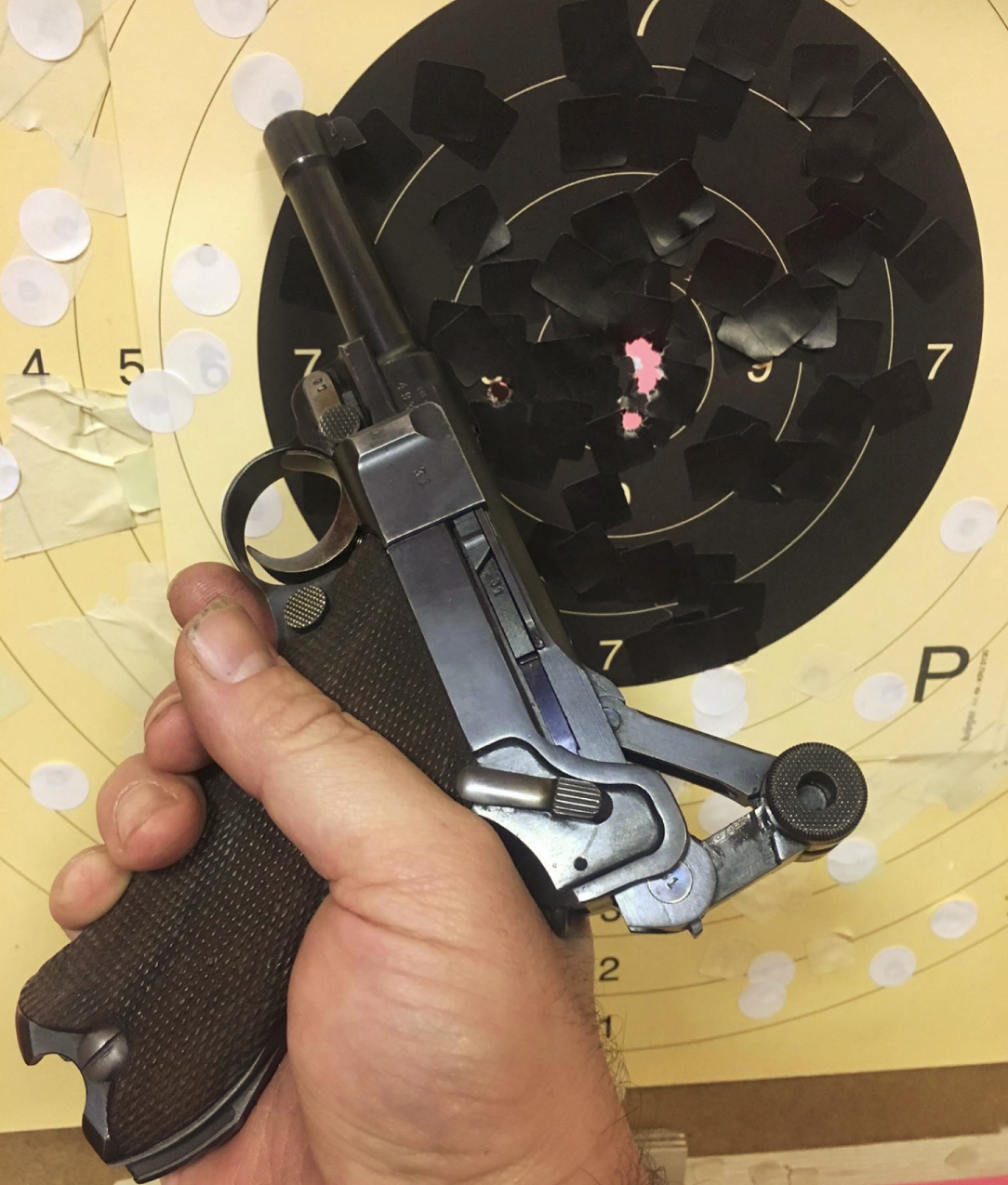
Håkan has for years owned and used both custom built and stock Lugers for bullseye shooting, and even for some occasional practical IPSC shooting.
Building a Luger for the wife
For the past years, in the little spare time he gets, Håkan has been building a Luger for his wife. Her requirement was that she wanted more weight towards the muzzle than a traditional luger (read better balance). She also wanted an adjustable sight, tighter fit and something that’s easy to achieve in a Luger, a really crisp trigger pull.
Below: Setup in a milling machine to make the round barrel, with integral sight base and ring.
Sight base and ring are parallel, while the barrel is conical.

The barrel and front sight are machined from the same piece of steel, a Lothar Walther blank, which adds to the pistol’s unique look and features. Håkan doesn’t claim any benefit to accuracy per se, but
the benefit lies in the machining, or rather the complexity of the machining.

If it isn’t challenging and thereby fun, Håkan isn’t interested.
The front sight is adjustable for elevation within the front sight base and that is done because Håkan has a lot of experience installing Bo-Mar sights to Luger rear toggles. He has even more experience having to repair them, as the snappy action of the toggle and the moving parts inside the rear sight do not go well together.
Below: Most work on the barrel is still left….

Since a lot of the joy for Håkan lies in the machining process, he uses only manual machines when working on his hobby projects. This means that he currently has spent over 50 working hours on the barrel and front sight alone.
Below: Draw filing is the classical way of filing barrels to avoid those small sharp things sticking to the file and making deep marks in the object.

Below: Loads of filing and polishing by hand

Below: The barrel is nearly finished in this picture. You can also see the blank from which it was born.

Below: clearance cut for extractor made by a simple homemade single lip cutter

In the event that a Luger breaks or cracks it is usually the rear toggle that is the culprit. This is usually due to the sharp 90 degree angles that are prone to cracking, Håkan has avoided this in his version of the Luger wherever possible.
Below: Front sight in slow process forward.

Below: Finished cutout for adjustable front sight machined out of front sight base in the barrel

The rear toggle
The rear toggle is also machined from scratch using only manual machinery. The reason behind it being made from scratch is to integrate the rear sight with the toggle and allow for windage adjustment. An added bonus is that his custom made rear toggle retains more material and has been reinforced in key areas. The toggle is made from Swedish Uddeholm Calmax steel, a very tough shock-resistant steel. The rear toggle including its rear sight blade and screws have well over 60 machining hours combined.
Below: The start of the rear toggle in a drill press.

The next steps of the rear toggle in a milling machine

Håkan has access to copies of the original drawings, so everything is made to specifications – or even better – wherever possible.
The Luger Trigger – The perfect Trigger?
When it comes to the trigger pull, a Luger trigger has the potential to be made very well. The mechanics behind the trigger pull is also very interesting. The Luger has a two stage trigger pull and when the slack from the first stage is taken up, 95% of the sear movement is done. This means that breaking the shot requires only a tiny additional movement of the sear.
Below: Sear welded up prior to being blueprinted back to spec.

Another benefit of this design is that if the trigger in this case is released and the shot doesn’t break, the sear will return to full sear engagement again. The mechanics of the Luger trigger is in principle very similar to SIG P210 and Benelli 9 mm pistols, and doesn’t share much with most other pistols, be it modern or historic.
In order to achieve a perfect trigger pull, Håkan will usually start with welding up the sear surface and the firing pin surface with hardened wire and grind the surfaces back to blueprint dimensions. From that point on, the trigger pull is adjusted solely by changing the relation between the connector, trigger and the springs.
Below: The sear gets ground back to spec in a tool grinding machine

Sear engagement remains untouched at the original 95%. The fitment of the fork (that is the slide on a Luger) and the frame is adjusted by changing the dimensions of the frame by essentially compressing it in a vice.
Below: Frame got squeezed together around a gauge block to get a better fit against the fork.

Below: Trigger pins got turned down and sleeved up to remove the play in the trigger.

Below: Fork is machined together with the barrel to make a like seamless joint.

Below: A lot of the work has been done with an Aciera VA22 drilling machine and a Schaublin 13 Milling Machine.

Below: Turning out the studs in a lathe.

Below: Machining the last parts of the slot for the windage adjustable blade.

Below: Loads of cuts have to be made in order to make the toggle.

Below of a collection of photos from restoring this Luger.

Below: “Blackening” has nothing to do with coffee! It’s an old great method of marking parts with soot to see where it touches the part.

Below: Little by little is machined off to get as tight lockup as possible against the fork.

Below: Setup in a milling machine to cut the serrations that partly go around the round studs on the rear
toggle.

Below: Almost done, starts to look like a rear toggle

Below: Rear toggle packed into stainless steel foil and prepared for a homemade vacuum hardening.

Below: And the package goes into the furnace.

Below: The finished rear toggle reinforced and with a windage adjustable sight blade. Hardened and almost only rust blue left.


Note the markings: “Mauser”. P.08 for Pistole 08.








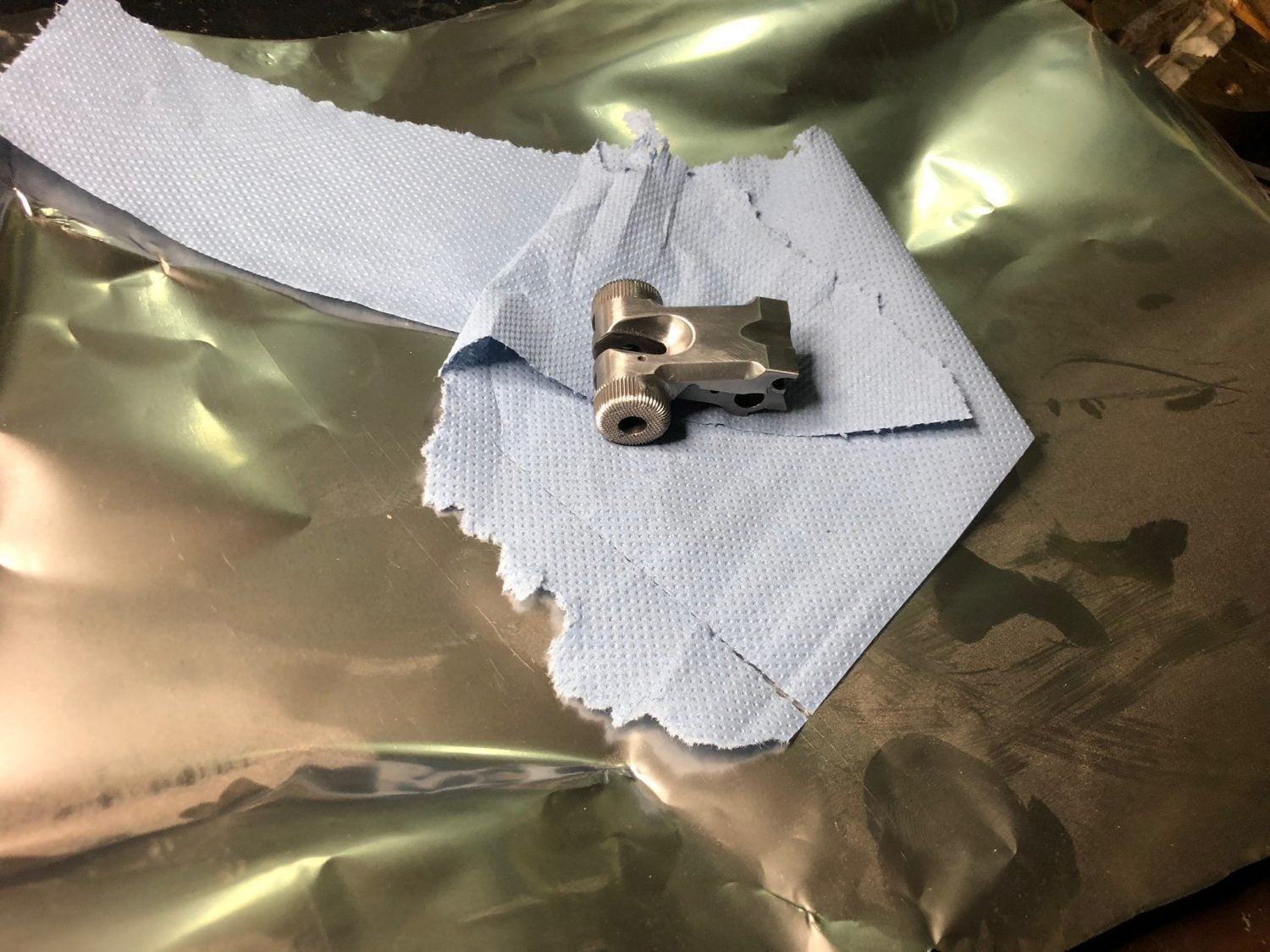
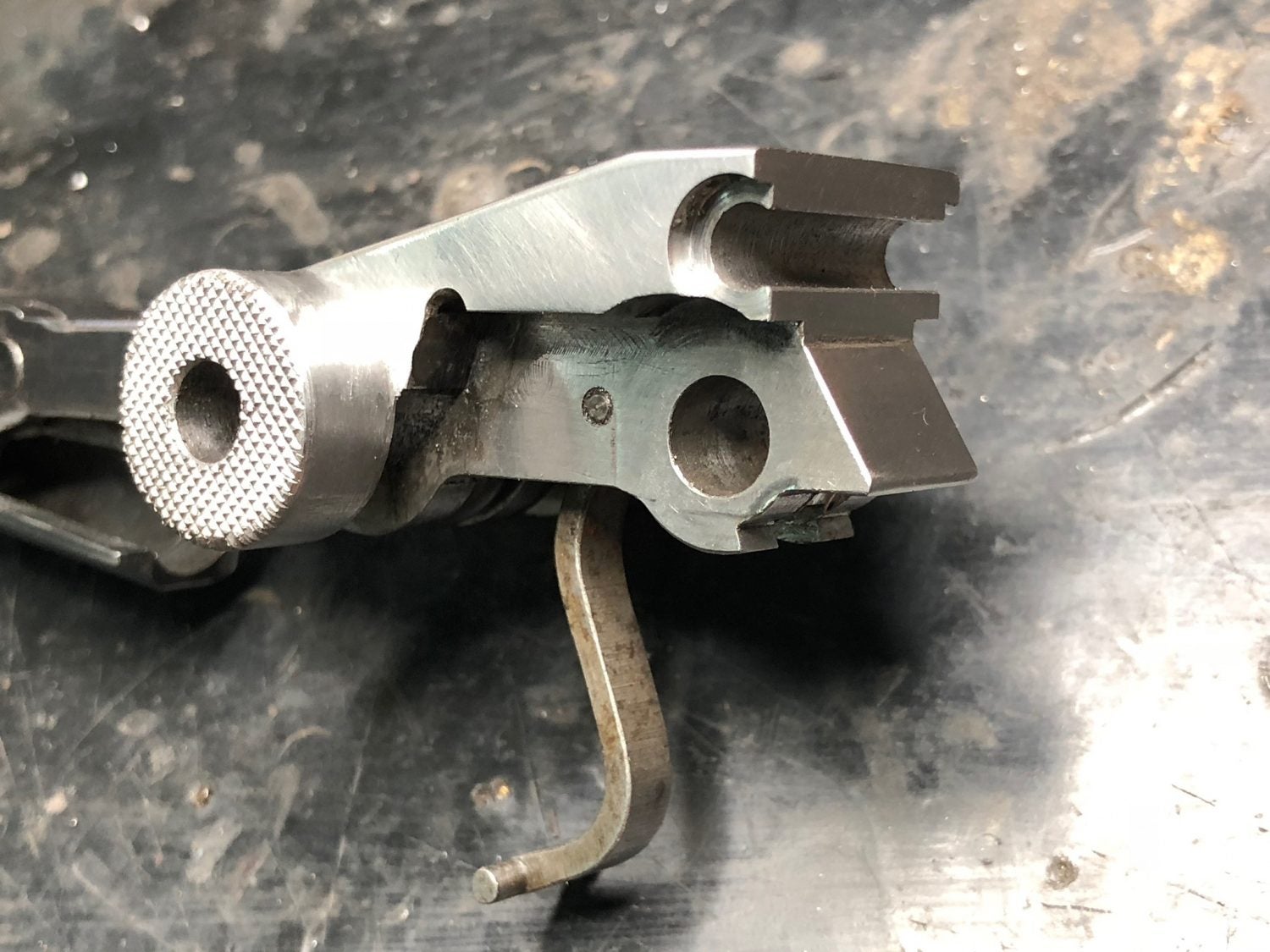
To make it easier to follow some of the work that was done to this Luger, Håkan uploaded a video for TFB.
A lot of work remains before the Luger can be finished and blued, but up to this point, Håkan has spent roughly 150 hours working on this pistol.
This is one of the reasons why Håkan cannot give a “fair price” if someone asks him what he would charge for a custom job. Usually, Håkan only accepts interesting trades such as old binoculars or vintage firearms as “payment” for his work.
Hopefully, it won’t take too long before we can see the finished product and when it is finished it will surely pop up here at TFB.
You’re welcome to follow Håkan Spuhr’s Instagram account for more interesting projects here: https://www.instagram.com/spuhr_ex_gunsmith/
If you’re interested in more information about the Luger pistols, please check Wikipedia’s link here.
What do you think of the project so far? Do you have similar skills? Please feel free to share your stories and appreciation below.
 Your Privacy Choices
Your Privacy Choices
